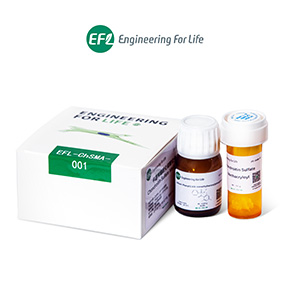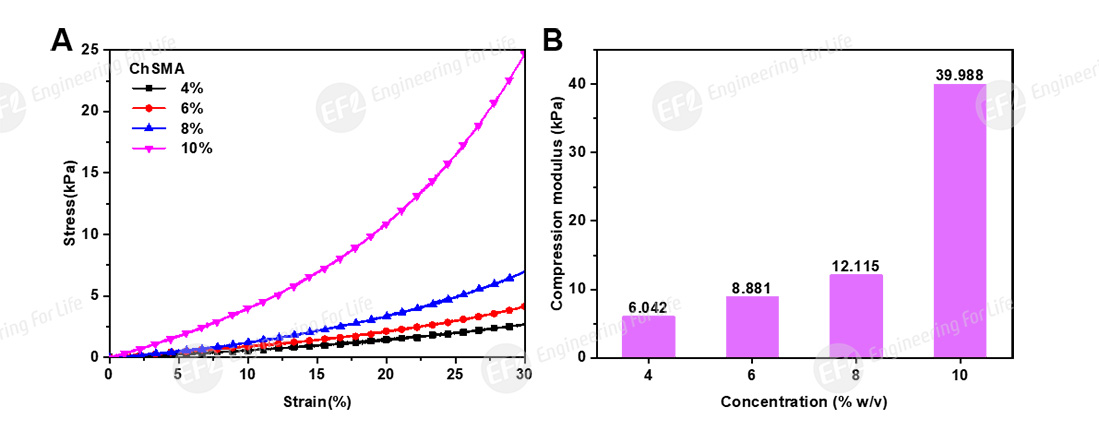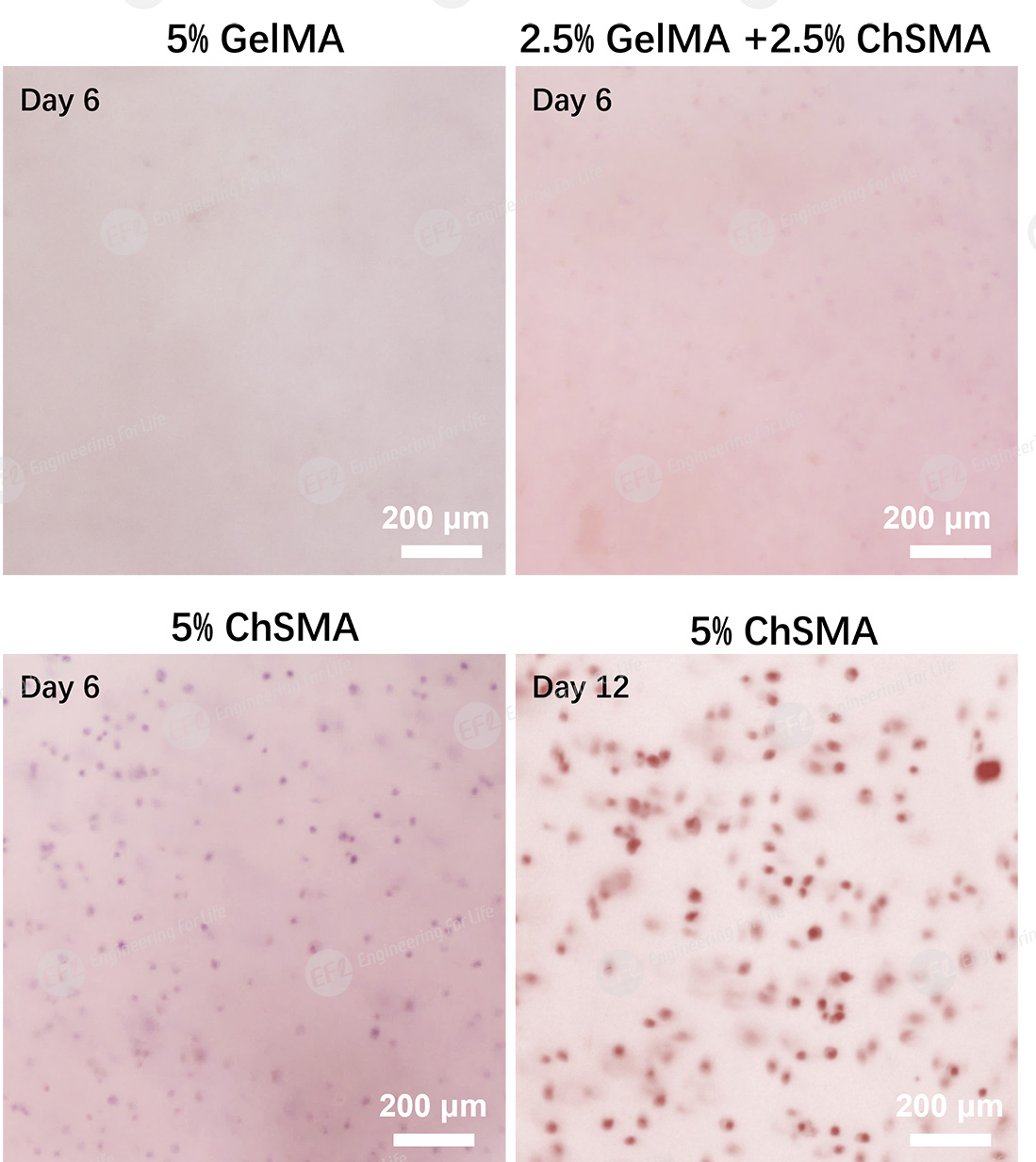Tel:0512-66958483
Email:engforlife-mkt@www.efl-tech.com


Chondroitin Sulfate Methacryloyl (ChSMA);EFL-ChSMA-001
The kit includes chondroitin sulfate methacryloyl and photoinitiator LAP.
All products in the ChSMA range can be used in cell culture, biological 3D printing, tissue engineering, etc.
This product is for research use only and can not be used in humans.
Salesperson:Panpan Wang(EFL)
Phone:15335258233
Email:engforlife-mkt@efl-tech.com
Foreign distributor:ANR Technologies Pte Ltd
Chondroitin sulfate (ChS) is a sulfated glycosaminoglycan whose molecular chain consists of alternating 1, 4-linked n-acetyl-β-d-galactosamine (β-D-GalNAc) and 1, 3-linked β-D-glucuronic acid (β-D-GlcA) disaccharide units. As a widely distributed glycosaminoglycan and an important part of cartilage and extracellular matrix in human body, ChS exists in a large number of tissues such as skin, cartilage, tendon, heart valve and central nervous system, and plays an important physiological role in vivo. Such as participating in the formation of bone and cartilage, regulating growth factors (fibroblast growth factor and transforming growth factor-β, etc.), promoting wound healing, anti-inflammatory, anticoagulant, antioxidant and anti-tumor.
Chondroitin sulfate methacryloyl (ChSMA) is a double-bond modified chondroitin sulfate and can be quickly photo-crosslinked and cured into gel through UV and visible light in the presence of a photoinitiator. Due to the portable cross-linking method and good biocompatibility, ChSMA-based material systems have been widely used in many biomedical research fields, including: osteoarthritis treatment, joint cartilage repair, skull repair, etc. ChS is rich in carboxyl groups and hydroxyl groups that are easily modified and can be used to build a variety of biomaterials, such as nanodrug carriers and bioadhesives for tumor diagnosis and treatment.
The ChSMA product from EFL team (EFL-ChSMA series) has stable physical and chemical properties through strict raw material screening and quality testing. It can be cured within 10 seconds with visible light irradiation, has good biocompatibility, strong material scalability, and can provide a variety of viscoelastic properties to adapt to different applications. ChSMA can be combined with GelMA, HAMA and other hydrogels from EFL to better simulate the microenvironment of bone, cartilage, skin and other body tissues, obtain better cell 3D culture and bio-ink.

Cell culture, bio 3D printing, tissue engineering, etc.
Dry kit: room temperature, 3 months; 4℃, 12 months; -20℃, 18 months.
The recommended concentration for ChSMA-001 is 4-10% (w/v). For details, please refer to the instructions.

Fig 1. Synthesis reaction mechanism and NMR spectrum of ChSMA

Fig 2. Rheological properties of ChSMA at different concentrations: (A) photocrosslinking process; (B) storage modulus G’ after curing; (C, D) viscosity

Fig 3. Compressive properties of ChSMA at different concentrations: (A) stress-strain curve;(B)compression modulus

Fig 4. ChSMA hydrogel 3D cell (mouse chondroblast) culture

Fig 5. Alizarin red staining diagram of ChSMA hydrogel 3D cell culture (MC3T3-E1) in a non-osteogenic environment
Fig 5 shows the alizarin red staining photos of MC3T3-E1 cells after 3D culture in GelMA and ChSMA hydrogel. Compared with ordinary hydrogels, EFL-ChSMA hydrogels can induce bone formation of cells without inducible factors or drugs.
The EFL-ChSMA hydrogels cure quickly and have adjustable mechanical properties, which show excellent forming results in projective light curing 3D printing (DLP) applications. The BP-86 series of photocurable bio-3D printers developed in conjunction with the EFL team can easily achieve the complex structure manufacturing of ChSMA.

Fig 6. ChSMA structure printed by photocuring bio-3D printer (EFL-BP-86 series)
【EFL-ChSMA】-Chondroitin Sulfate Methacryloyl